Have you ever wondered where the Camino de Santiago starts? Facing this question, you’re probably thinking of Roncesvalles and the French Way, although there are other Jacobean routes with different starting points. Once you’ve decided which Camino to take, the next decision is where to start from, and walking the last 100 kilometers of the Camino de Santiago is often the winning choice. Why? Because it’s a stretch that can be done in less than a week, whether walking or cycling, ending in Santiago. We let you know that the last 100 kilometers of the routes to Santiago are within Galicia. With this option, pilgrims will traverse this magical region, with its landscapes, its people, and its exquisite cuisine, and also, they will earn their Compostela.
The French Way from Sarria (115 km)
The quintessential route among all the Ways to Santiago, the French Way, which year after year breaks its own records. Crossing the provinces of Lugo and A Coruña, you will pass through Portomarín, Palas de Rei, Melide, Arzúa, and O Pedrouzo. Traditionally a very busy route, it gathers a large number of origins, both from Spain and Europe, and is also the best equipped in terms of services. The last 100 kilometers of the French Way from Sarria is the most comfortable and straightforward option, perfect for beginners and meeting new people.
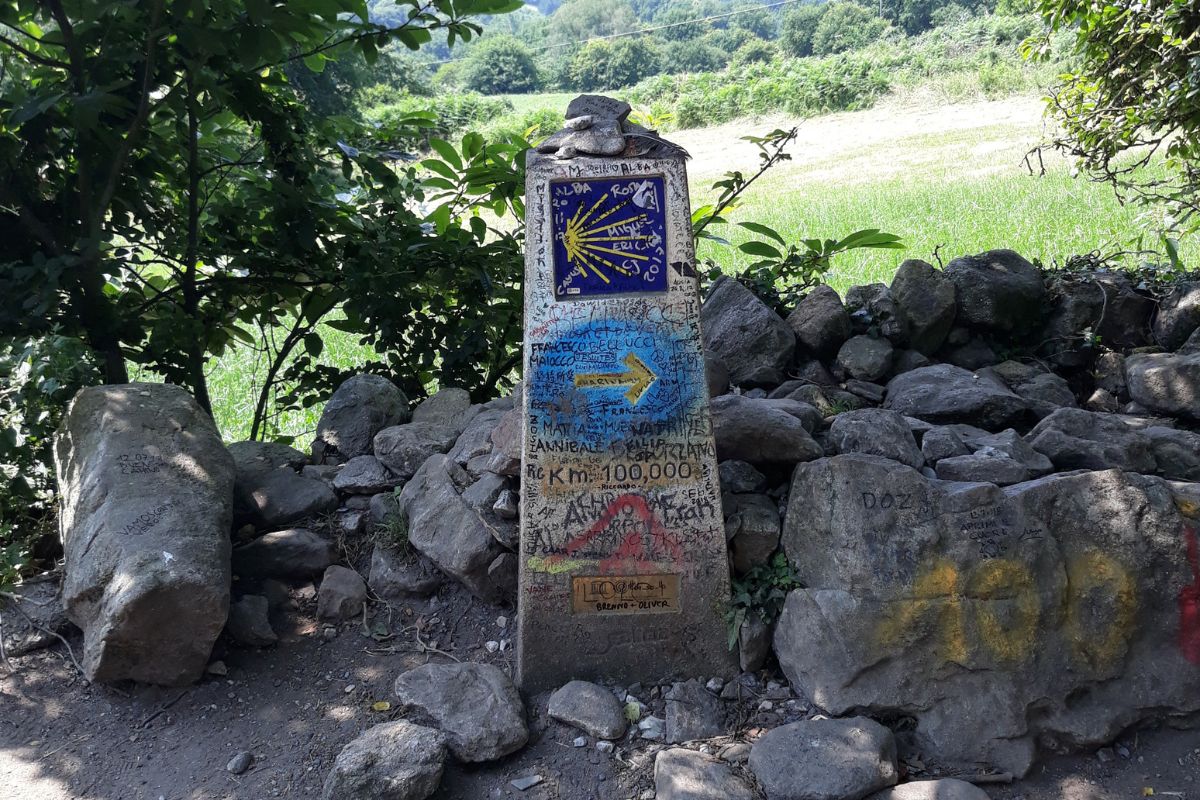
The classic milestone Km. 100,000 of the last 100 km of the French Way from Sarria
The Portuguese Way from Tui (120 km)
The Portuguese Way is the second most traveled route, named after its origin from Portugal. In fact, the last 100 kilometers of the Portuguese Way from Tui start at the border with Portugal, traveling through the provinces of Pontevedra and A Coruña. It passes through the towns of O Porriño, Redondela, Arcade, Pontevedra, Caldas de Reis, and Padrón. Much of its route follows the ancient Roman road XIX, which linked Bracara Augusta (Braga, Portugal) with Lucus Augusta (Lugo). With a mix of inland and coastal areas at some points, besides the Compostela, you can obtain the Pedronía, a similar certificate issued in Padrón.
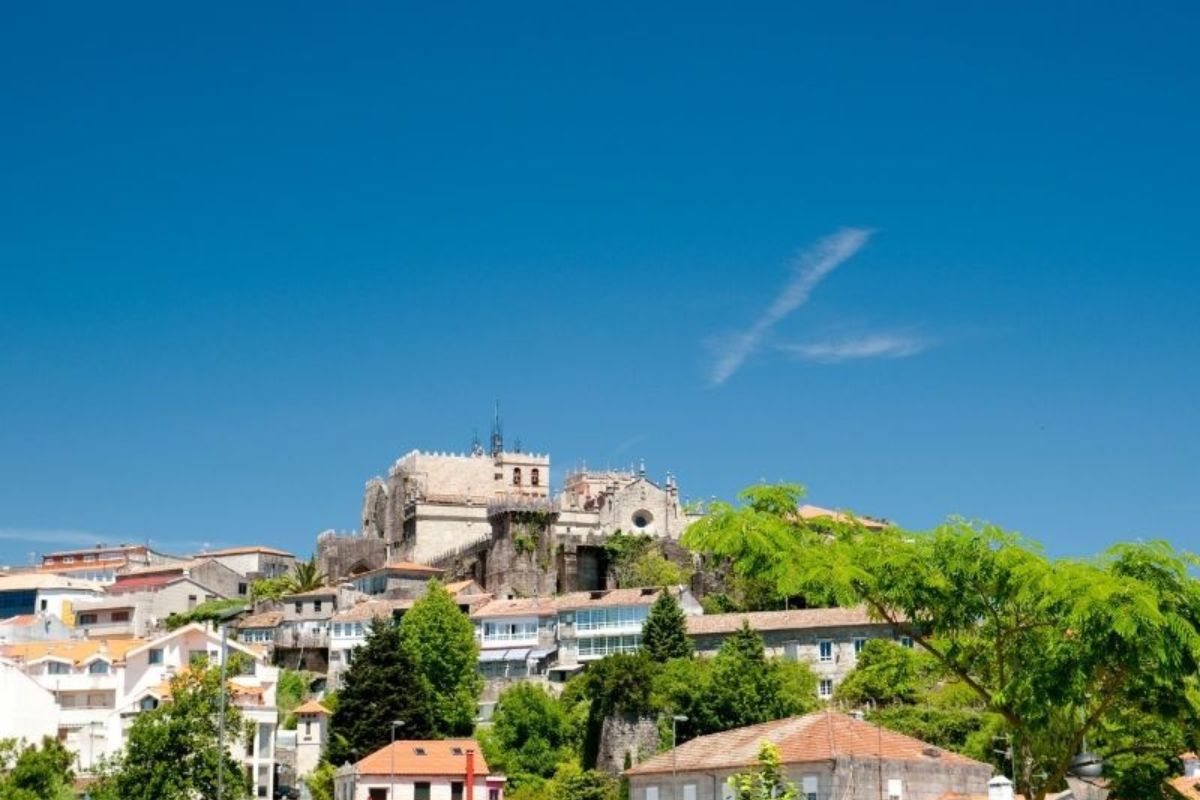
View of he cathedral of Tui, in the last 100 km of the Portuguese Way
The Portuguese Coastal Way from Vigo (100 km)
This is usually the third most traveled route, the Portuguese Coastal Way. The last 100 kilometers of the Portuguese Coastal Way from Vigo cover the provinces of Pontevedra and A Coruña. In Redondela, it joins the Portuguese Way coming from Tui, and is a great alternative to enjoy its proximity to the sea.
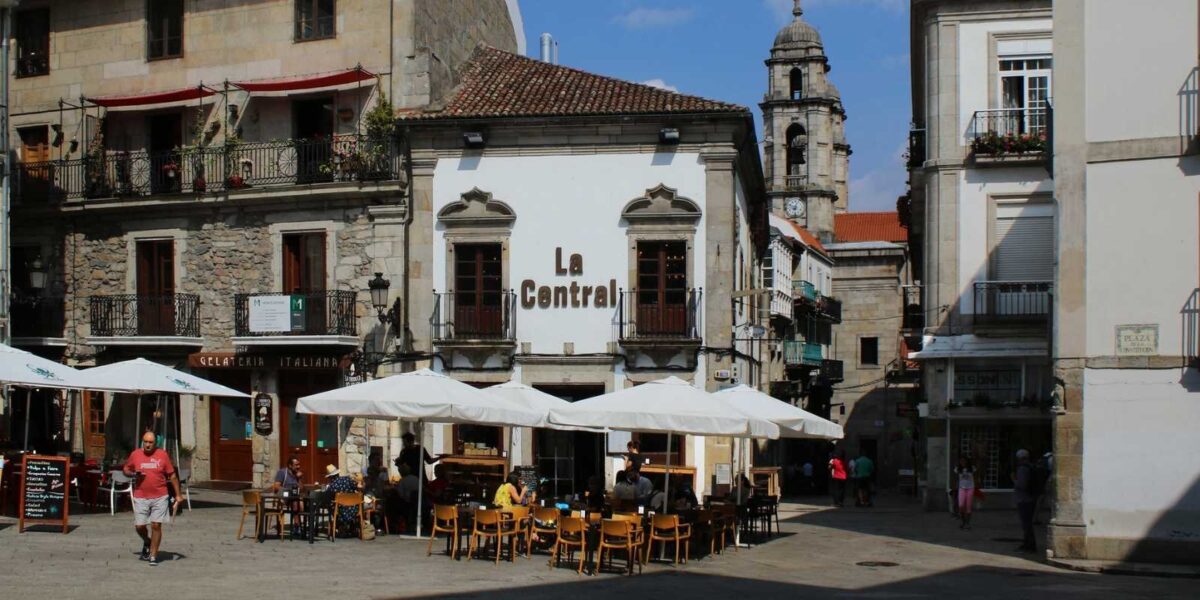
Historic center of Vigo, in the last 100 km of the Portuguese Coastal Way
The English Way from Ferrol (113 km)
The English Way is the route taken by English and Northern European people to avoid the long and dangerous French route. These pilgrims embarked in the south of England and arrived at ports in the north of Galicia, where they continued walking. It can start from A Coruña, with 73 km, or from Ferrol, with 113 km to Santiago. Crossing the towns of Neda, Pontedeume, Betanzos, Hospital de Bruma, and Sigüeiro, this Way combines the waters of the Rías Altas with rural landscapes. Interestingly, this route, which is seeing moderate annual growth in pilgrims, runs entirely through a single province, A Coruña. Indeed, if you walk the last 100 kilometers of the English Way from Ferrol, you are completing the entire route.
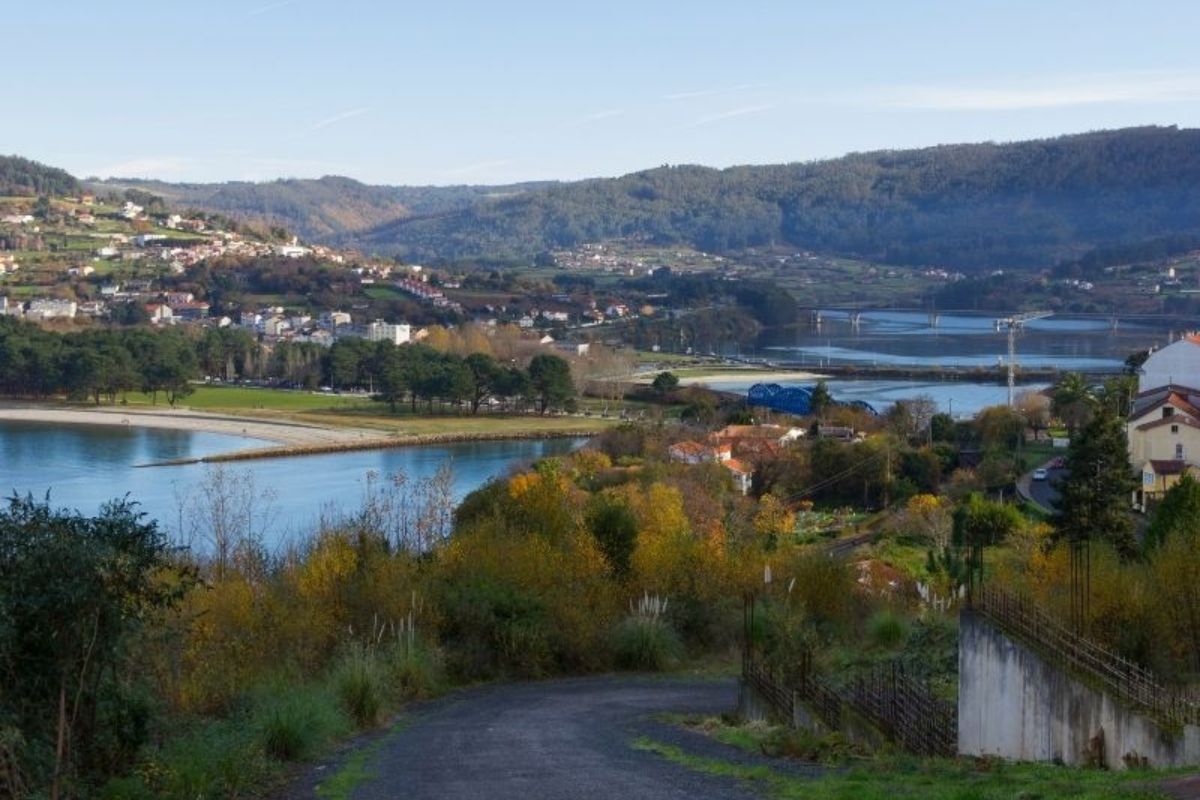
Cabanas beach, in the last 100 km of the English Way from Ferrol
The Northern Way from Vilalba (120 km)
A route, the Northern Way, that runs along the entire Cantabrian coast and crosses, in Galicia, the provinces of Lugo and A Coruña. By walking the last 100 kilometers of the Northern Way from Vilalba, you will pass through Baamonde, Miraz, Sobrado dos Monxes, Arzúa, and Pedrouzo. While it initially traverses a rural environment without major cities, it features monuments of great value, such as the Monastery of Santa María de Sobrado dos Monxes. It is a less traveled route but is moderately growing, although upon reaching Arzúa, it converges with the French Way and the number of pilgrims increases.
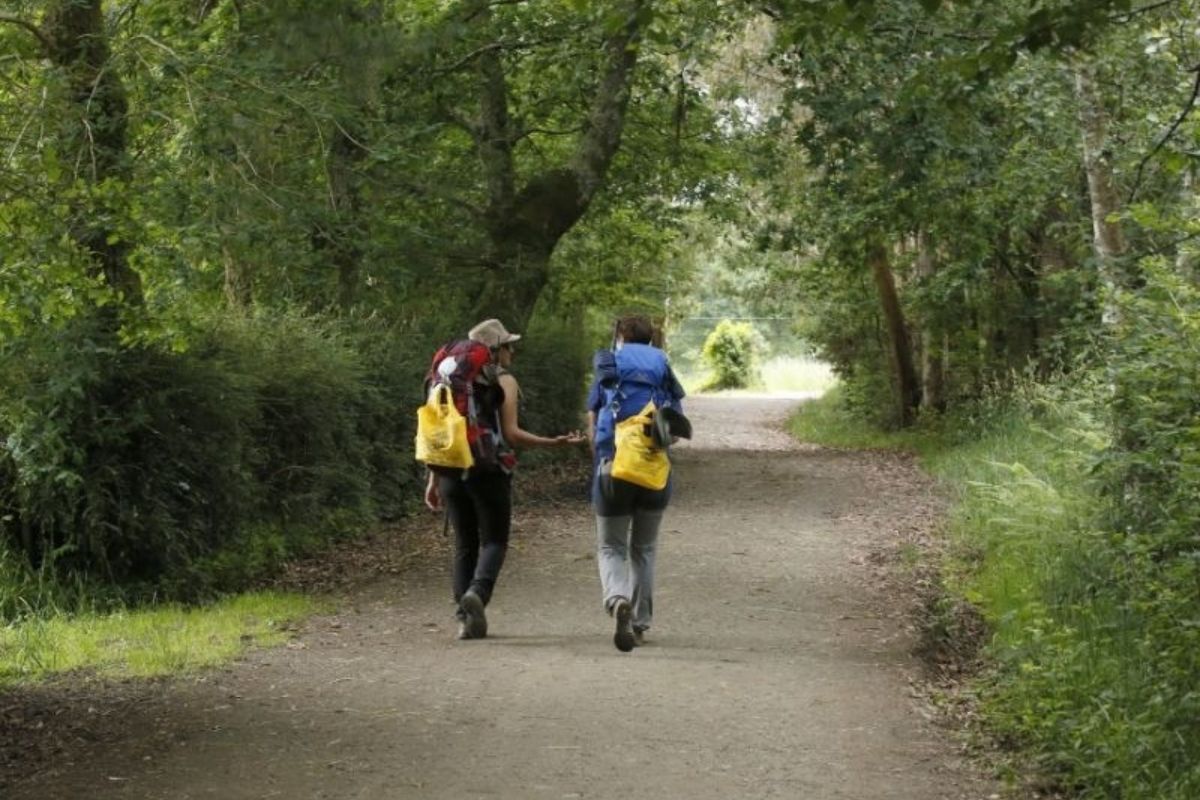
Pilgrims in the last 100 km of the Northern Way from Vilalba
The Primitive Way from Lugo (102 km)
This route, the Primitive Way, is the first of all. The history of the Primitive Way tells of the first pilgrimage to Santiago, that of the Asturian king Alfonso II “the Chaste,” to officially confirm the discovery of the Apostle’s tomb. Less frequented but slowly growing, the last 100 kilometers of the Primitive Way from Lugo cross the provinces of Lugo and A Coruña. You will pass through Ponte Ferreira, Melide, Arzúa, and O Pedrouzo, and as with the Northern Way, it converges with the French Way in Melide.
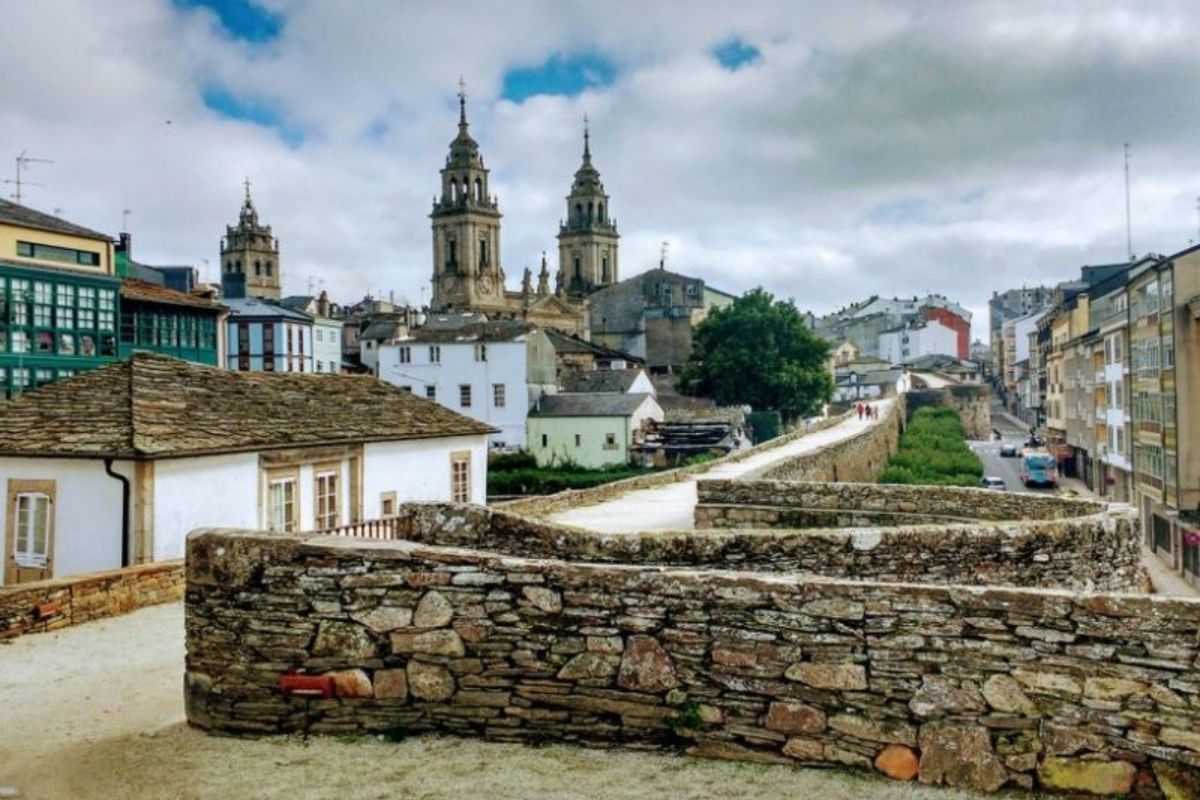
In the last 100 km of the Primitive Way, you can enjoy the Roman wall of Lugo
The Sanabrian Way from Ourense (110 km)
An alternative route to Santiago from the Via de la Plata, which also passes through Astorga and the French Way, is the Sanabrian Way. The last 100 kilometers of the Sanabrian Way from Ourense, a less traveled route, allow you to explore this beautiful thermal and historically Roman capital. Crossing the provinces of Ourense, Pontevedra, and A Coruña, it passes through Cea, Lalín, Bandeira, and Santa Cruz de Rivadulla.
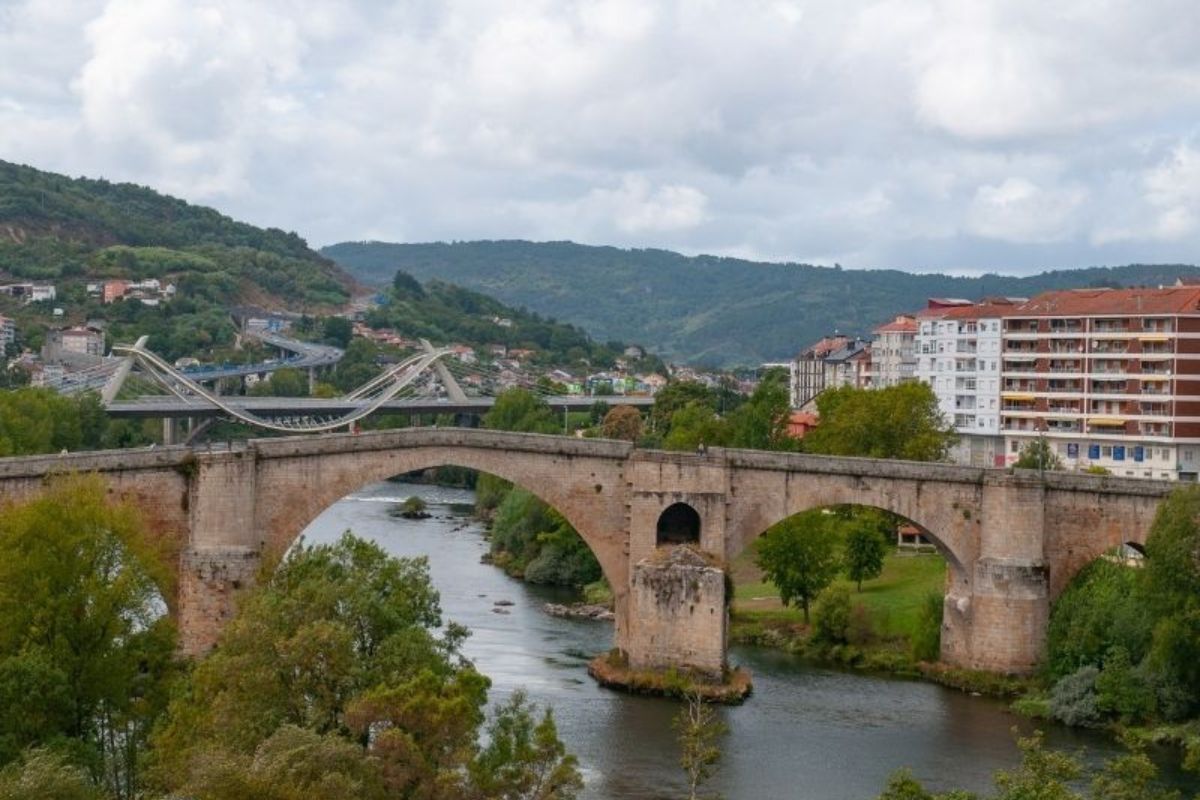
Roman bridge in Ourense, in the last 100 km of the Sanabrian Way
The Winter Way from Chantada (108 km)
This less-traveled route, the Winter Way, covers the provinces of Ourense, Pontevedra, Lugo, and A Coruña. The last 100 kilometers of the Winter Way from Chantada cross Rodeiro, Lalín, and Ponte Ulla, an alternative to the French Way to avoid high mountains. In this route, you must try the famous Lalín stew to combat the cold winter, a delight of Galician cuisine.
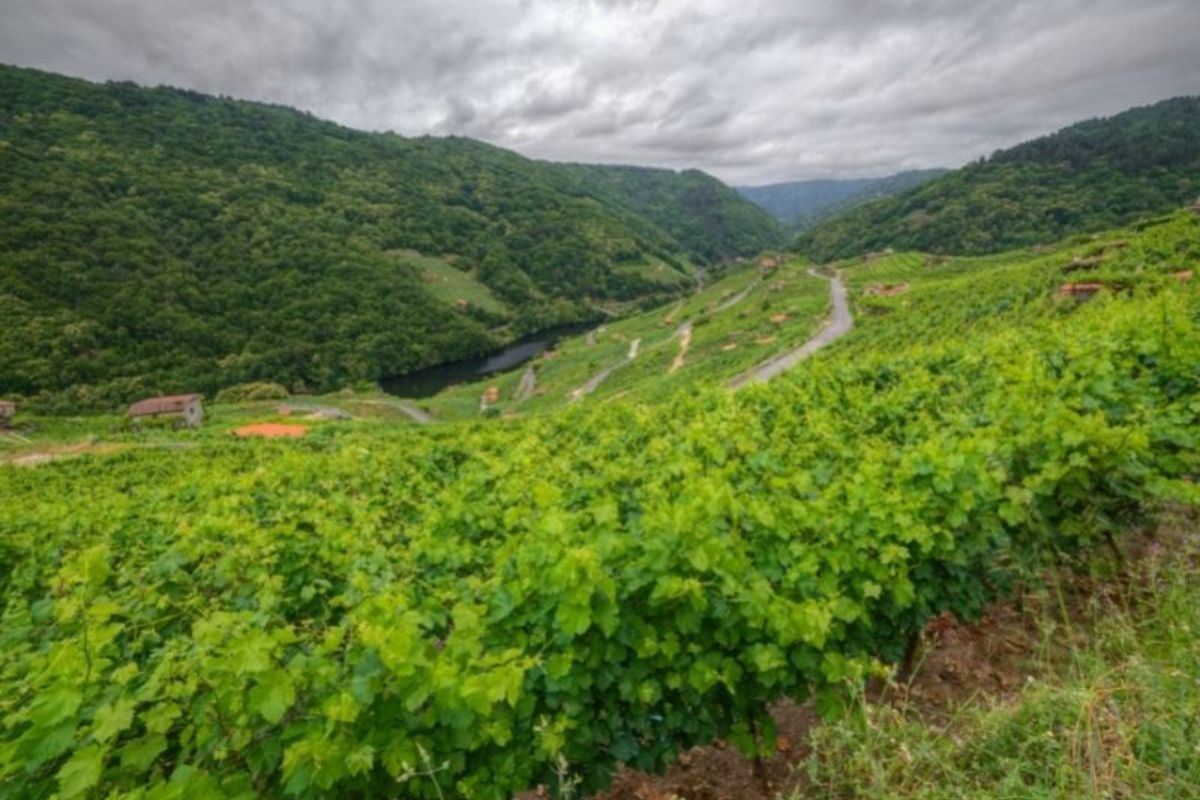
In the last 100 km of the Winter Way, there are spectacular landscapes
Get Your Compostela With Us
And that’s not all! In addition to the Compostela, which you will earn by completing any of these easy and beautiful routes, you will take home unforgettable memories from your pilgrimage experience. We can help you, whether you want to do the Camino alone or enjoy the company of new friends on an organized group Camino. However you do it, we guarantee that walking the last 100 kilometers of the Camino de Santiago will be a transformative and unforgettable experience.

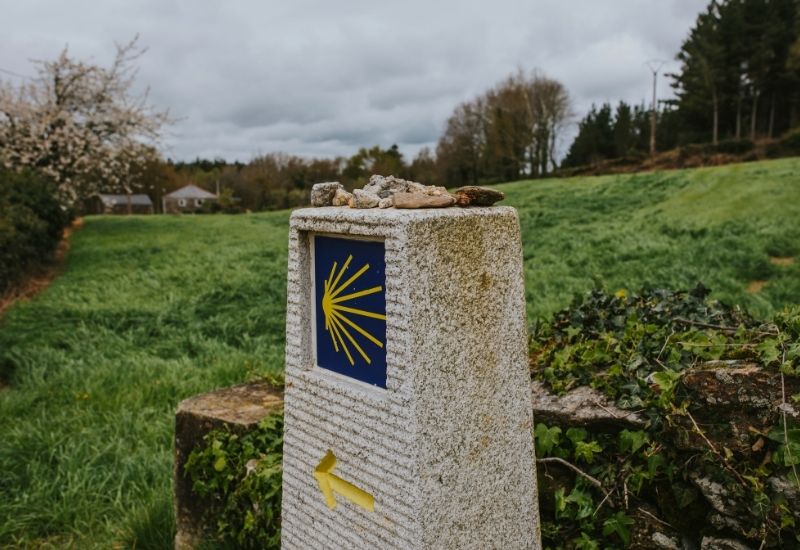


Leave A Comment